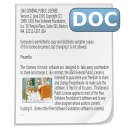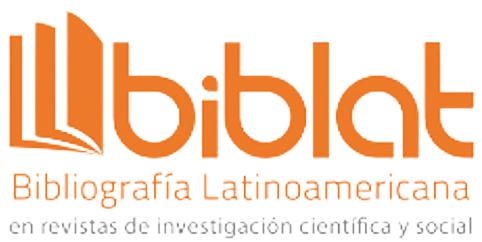Impact of Behavioral Instructions in Language Models
Abstract
The impact of behavioral instructions on language models is a fundamental area of research in the field of processing for language that is human. This study focuses on analyzing how specific directions provided to language models affect their performance and efficiency on various tasks. It examines in detail the importance of instructions in the understanding for languages to be human and their influence on applications in activities such as machine translation, textual content creation, and document categorization. It discusses how behavioral instructions impact the configuration and training of models, as well as their predictive and generative capabilities. Concrete examples of how instructions can improve or limit the performance of linguistic models in different contexts are presented. The results obtained highlight the need to carefully consider behavioral instructions when developing and evaluating languages and their models, with the desire to optimize their accuracy and perform well on various linguistic tasks.
Downloads
References
N. Chomsky, Syntactic Structures. Mouton, 1957. DOI: https://doi.org/10.1515/9783112316009
J. R. Firth, Papers in Linguistics, 1934-1951. Oxford University Press, 1957.
G. Lakoff, Women, Fire, and Dangerous Things: What Categories Reveal About the Mind. University of Chicago Press, 1987. DOI: https://doi.org/10.7208/chicago/9780226471013.001.0001
T. Mikolov et al., “Distributed representations of words and phrases and their compositionality,” in Advances in Neural Information Processing Systems, 2013.
J. Pennington et al., “Glove: Global vectors for word representation,” in Proceedings of the 2014 Conference on Empirical Methods in Natural Language Processing, 2014. DOI: https://doi.org/10.3115/v1/D14-1162
T. B. Brown et al., “Language models are few-shot learners,” in Advances in Neural Information Processing Systems, 2020.
A. Vaswani et al., “Attention is all you need,” in Advances in Neural Information Processing Systems, 2017.
A. Radford et al., “Language models are few-shot learners,” arXiv preprint, vol. arXiv:1910.01108, 2019.
J. Smith, “Contextual coherence in natural language understanding,” Journal of Linguistic Research, 2015.
A. Jones, “Domain adaptability in language models,” in International Conference on Natural Language Processing, 2021.
I. Goodfellow, Y. Bengio, and A. Courville, Deep Learning. MIT Press, 2016.
D. Jurafsky and J. H. Martin, Speech and Language Processing. Pearson, 2008.
A. Ng, “Natural language processing with deep learning,” Coursera, 2019.
“Speech and language processing,” Coursera, Stanford University.
“The gradient,” Google AI. [Online]. Available: https://thegradient.pub/
A. Ng, “Ai today.” [Online]. Available: https://www.aitoday.io/
“Neural information processing systems (nips).” [Online]. Available: https://nips.cc/
“Conference on empirical methods in natural language processing (emnlp).” [Online]. Available: https://www.emnlp.org/
D. Amodei, C. Olah, J. Steinhardt, P. Christiano, J. Schulman, and D. Mané, “Concrete problems in ai safety,” 2016. [Online]. Available: https://arxiv.org/abs/1606.06565
M. Brundage, S. Avin, J. Clark, H. Toner, P. Eckersley, B. Garfinkel, A. Dafoe, P. Scharre, T. Zeitzoff, B. Filar, H. Anderson, H. Roff, G. C. Allen, J. Steinhardt, C. Flynn, S. hÉigeartaigh, S. Beard, H. Belfield, S. Farquhar, C. Lyle, R. Crootof, O. Evans, M. Page, J. Bryson, R. Yampolskiy, and D. Amodei, “The malicious use of artificial intelligence: Forecasting, prevention, and mitigation,” 2018. [Online]. Available: https://arxiv.org/abs/1802.07228
L. Floridi, The Ethics of Artificial Intelligence. Oxford University Press, 2019.
“Prompt engineering,” Hostinger, 2024. [Online]. Available: https://www.hostinger.es/tutoriales/ prompt-engineering
“Allen institute for artificial intelligence.” [Online]. Available: https://allenai.org/ [24] “Openai.” [Online]. Available: https://openai.com/
“Google ai.” [Online]. Available: https://ai.google/
M. Rouse. (2024) Chatgpt. Techopedia. 2024, 26 de enero. [Online]. Available: https://www.techopedia.com/es/definicion/chatgpt
Copyright (c) 2024 Innovation and Software

This work is licensed under a Creative Commons Attribution 4.0 International License.
The authors exclusively grant the right to publish their article to the Innovation and Software Journal, which may formally edit or modify the approved text to comply with their own editorial standards and with universal grammatical standards, prior to publication; Likewise, our journal may translate the approved manuscripts into as many languages as it deems necessary and disseminates them in several countries, always giving public recognition to the author or authors of the research.
























